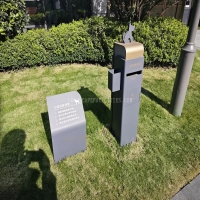Welcome to the website for landscape facilities products and knowledge.
What are the options for integrating personal or team water or hydrotherapy tools?
Hydrotherapy has evolved from luxury spa treatments to accessible wellness solutions for both individuals and groups. The integration of water-based therapy tools requires careful consideration of space, purpose, and technological capabilities. For personal use, compact options like inflatable hot tubs, handheld hydro-massage units, and shower attachment systems offer convenient hydrotherapy benefits. These portable solutions typically require minimal installation and can be stored when not in use, making them ideal for apartment dwellers or those with limited space.
Team or commercial hydrotherapy integration presents more complex possibilities. Custom-built hydrotherapy pools with multiple jet configurations allow simultaneous treatment of several individuals. These installations often incorporate temperature control systems, adjustable current generators, and accessibility features like railings and graduated entries. For sports teams or rehabilitation centers, contrast therapy stations combining hot and cold plunge pools provide effective recovery solutions.
Technological integration represents the cutting edge of hydrotherapy tools. Smart control systems now enable users to pre-program temperature settings, jet intensity, and session duration through mobile applications. Some advanced systems even incorporate biometric sensors that adjust water pressure and temperature based on real-time physiological feedback. These connected systems can track usage patterns and therapy outcomes over time, providing valuable data for both personal users and healthcare professionals.
The selection process for hydrotherapy tools should consider several factors. Available space dictates whether freestanding units, built-in installations, or portable options are most appropriate. Budget considerations extend beyond initial purchase costs to include installation expenses, ongoing maintenance, and energy consumption. Intended usage frequency and the specific therapeutic goals—whether for relaxation, athletic recovery, or medical rehabilitation—will influence the optimal choice.
Installation requirements vary significantly between different hydrotherapy options. Basic portable units may only need access to a standard electrical outlet and water source, while permanent installations often require professional plumbing and electrical work. Commercial-grade hydrotherapy pools might need structural reinforcement of floors and specialized ventilation systems. Proper drainage considerations are essential for all installations, particularly in multi-story buildings.
Maintenance protocols form another crucial aspect of hydrotherapy integration. Personal units typically need regular filter changes and water treatment, while commercial systems require more comprehensive cleaning schedules and professional inspections. Modern hydrotherapy tools often include self-cleaning features and water sanitation systems that minimize maintenance demands. Understanding these requirements before purchase ensures long-term satisfaction with whichever hydrotherapy solution you choose.
The future of hydrotherapy integration appears promising, with emerging technologies like AI-assisted massage programming and virtual reality relaxation experiences being incorporated into water therapy systems. These developments promise increasingly personalized hydrotherapy experiences that can be tailored to individual preferences and therapeutic needs, whether for solitary use or group sessions.
Related search:

Recommendation
Outdoor cat and dog feces trash can; Community pet trash can; Metal multi-color design